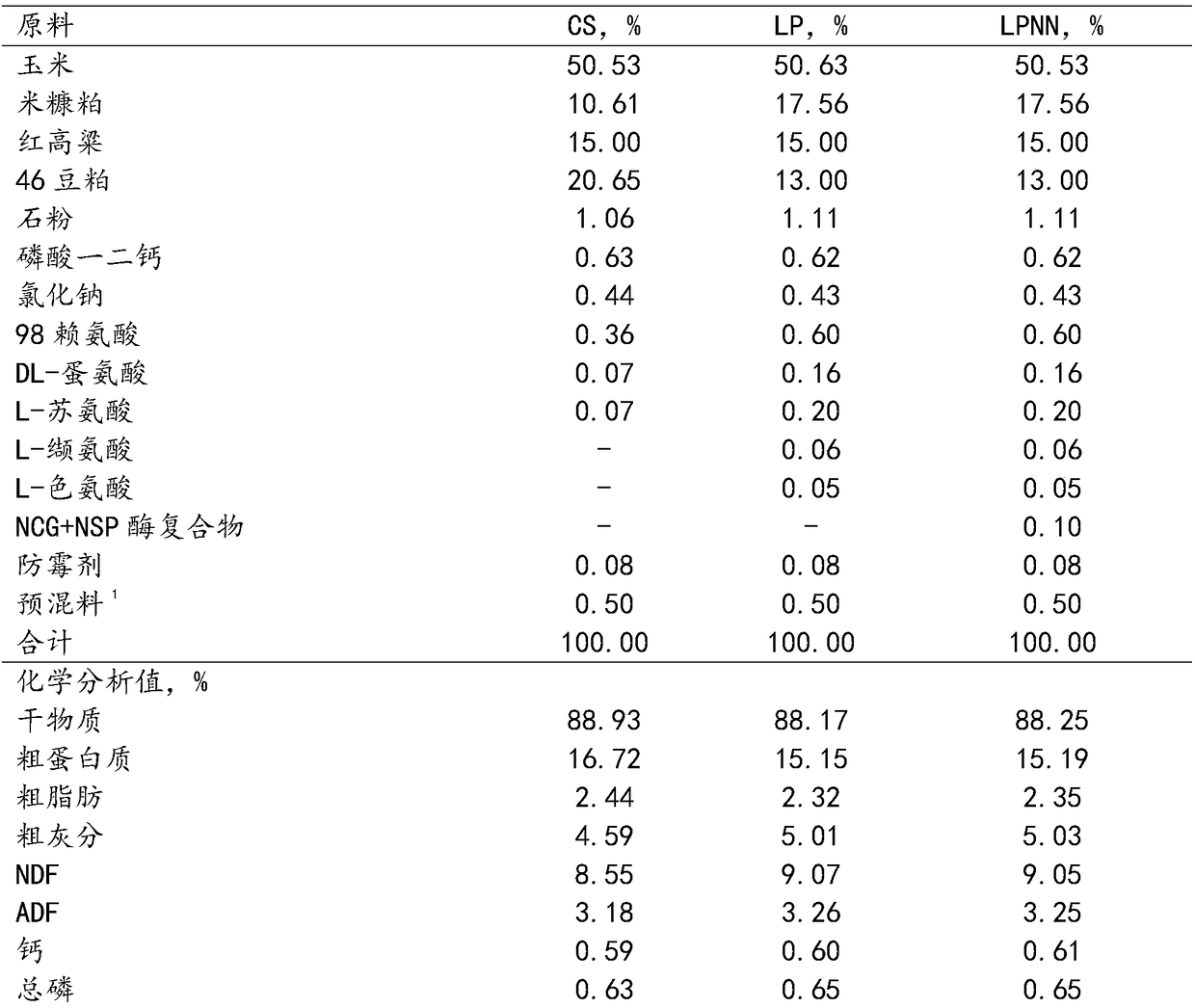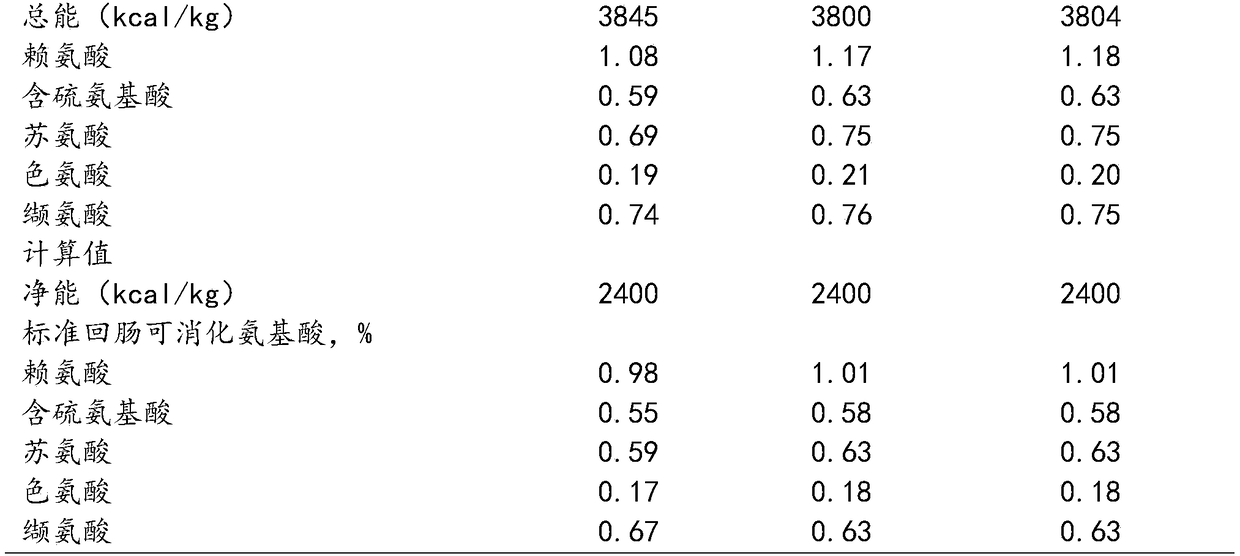Low nitrogen discharge daily ration for growing-finishing pig and application thereof
A nitrogen emission, non-starch polysaccharide enzyme technology, applied in the application, animal feed, additional food elements, etc., can solve the problems of reducing the digestibility and activity of plant proteins and amino acids, and achieving intramuscular fat content. Meat ratio, the effect of saving high-quality protein resources
- Summary
- Abstract
- Description
- Claims
- Application Information
AI Technical Summary
Problems solved by technology
Method used
Image
Examples
Embodiment 1
[0047] Example 1. Effects of NCG and NSP enzyme supplementation in low nitrogen emission diets on pig growth performance, meat quality traits and nutrient digestibility
[0048] 1 Materials and methods
[0049] 1.1 Experimental animals and diet
[0050] Select 360 healthy Duchangda ternary hybrid commercial pigs (the initial weight is about 25kg), half male and female, randomly divided into 5 dietary treatments, each treatment has 6 pigs, each pig is a replicate, and each replicate 12 pigs. The experimental period was divided into three stages: growth period (25-60kg), early fattening (60-90kg) and late fattening (90-110kg).
[0051] The experiment adopted a single-factor completely randomized design, and the diets in each stage were divided into 5 treatments. NSP enzyme group 1 (LPNN1), low nitrogen emission diet+NCG+NSP enzyme group 2 (LPNN2), low nitrogen emission diet+NCG+NSP enzyme group 3 (LPNN3), LPNN1 group was the LP group diet at each stage 0.09% NCG and 0.01% NS...
Embodiment 2
[0129] Example 2. Effects of low nitrogen emission diets on intestinal nutrient digestibility and digestive enzyme activity of growing pigs
[0130] 1 Experiment design and diet
[0131] 10 growing pigs (48.5±2.9) kg were randomly divided into 5 groups, each group had 2 replicates, and the metabolic cages were raised in a single cage. The experiment used a 5 × 3 Yaodon square design, with a total of 5 diets and 3 experimental periods, with a total of 6 replicates for each diet. Each experimental period included a 5-day pre-feeding period and a 5-day fecal and urine collection period.
[0132] Twelve (49.8±3.5) kg growing pigs with ileal T-type fistula were randomly divided into 6 groups, with 2 replicates in each group, and the metabolic cages were raised in a single cage. The experiment used a 6 × 3 Yaodon square design, with a total of 6 diets and 3 experimental periods, with a total of 6 replicates for each diet. Each of these experimental periods consisted of a 5-day pr...
PUM
 Login to View More
Login to View More Abstract
Description
Claims
Application Information
 Login to View More
Login to View More - R&D
- Intellectual Property
- Life Sciences
- Materials
- Tech Scout
- Unparalleled Data Quality
- Higher Quality Content
- 60% Fewer Hallucinations
Browse by: Latest US Patents, China's latest patents, Technical Efficacy Thesaurus, Application Domain, Technology Topic, Popular Technical Reports.
© 2025 PatSnap. All rights reserved.Legal|Privacy policy|Modern Slavery Act Transparency Statement|Sitemap|About US| Contact US: help@patsnap.com



